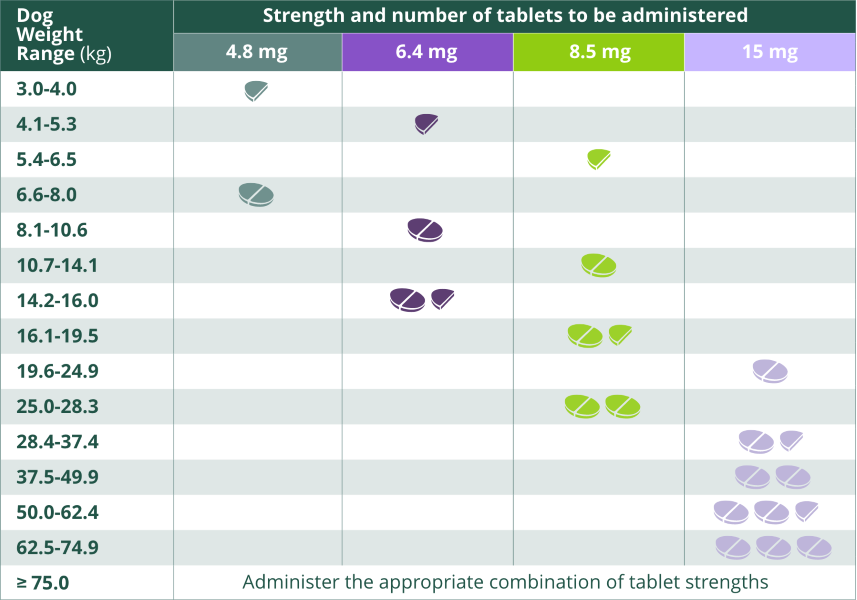Simple itch relief with Zenrelia™
Once-daily dosing from the start
Zenrelia works fast. Over the first 14 days of treatment, once-daily dosing with Zenrelia achieves comparable reductions in itch scores to twice-daily dosing with Apoquel®.1**
Dosing made simple
 Once a day
Once a dayConsistent, once-daily dosing from the start2
 Hypoallergenic
HypoallergenicZenrelia tablets are free from flavour additives that could trigger food allergies2
 Easy to administer
Easy to administerCan be given with or without food2
 Rapid relief
Rapid reliefWith Zenrelia, owners can see visible itch relief after just one dose1
 Owner compliance
Owner complianceOnce-daily dosing may help reduce the treatment burden on owners, meaning owners are more likely to comply with treatment1,3,4
Dosing Zenrelia

Zenrelia is supplied in 4 strengths and is dosed once-daily at 0.6-0.8 mg/kg body weight.2
Sizes of Zenrelia tablets

The tablet illustrations are for visual reference only and not actual size.

Veterinary experts rate Zenrelia

“Zenrelia will benefit the owners of dogs with atopic dermatitis because they're going to be much less itchy. They're also only going to need to give medication once a day and that makes it simple to prescribe. I would absolutely prescribe Zenrelia myself and if my dog was itchy I would use it on my dog.”
Dr Helena Langley BVetMed, CertVD, MRCVS
GP Vet (Dermatology Focus)

Safety profile
Zenrelia has a comparable safety profile to Apoquel1. It can be given alongside commonly used medications, including vaccines, antibiotics, parasiticides, ear cleaners, sedatives, anaesthetics and NSAIDs (non-steroidal anti-inflammatory drugs).1,2†† It is well-tolerated when given long-term for maintenance therapy.5†

Questions?
Zenrelia Resources
* Referenceable claims in digital & social copy can be found on this page. Full reference list below.
** Based on PVAS scores over first 14 days of treatment1.
† Based on Zenrelia use over a six-month period.
†† Refer to SPC section 3.8 for more information
- Forster S et al. Vet Dermatol. 2025; Apr;36(2):165-176.
- Zenrelia Summary of Product Characteristics.
- Spitznagel MB et al. Vet Dermatol 2021; 32:192-e50.
- Boda, Caroline & Liège, Philippe & Rème, Christophe. (2011). Journal of Applied Research in Veterinary Medicine, The. 9 157-165.
- Kuntz EA et al. BMC Vet Res. 2025 Mar; 21:144.



